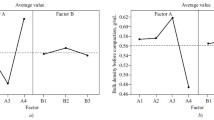Abstract
A pharmaceutical formulation typically contains one or more excipients in addition to the active pharmaceutical ingredient(s). Though excipients have been considered inert components of a formulation, variability in their properties has been shown to affect the performance of drug dosage forms and delivery systems. This study investigates the inter- and intra-manufacturer variability among different NF grades and lots of xanthan gum made by two manufacturers. As many formulators rely on compendial standards to monitor and control the variability of excipients, this study focuses on the adequacy of the NF specifications, in particular the viscosity specification, to discern the variability in solution properties of different pharmaceutical grades and lots of xanthan gum. All the grades and lots in this study were NF grade materials. Xanthan gum solutions were prepared in accordance with NF test methodology and were rheologically evaluated using a rotational rheometer. Both steady shear measurements and small amplitude oscillatory measurements were carried out on 1% w/w xanthan gum solutions. Results showed significant inter- and intra-manufacturer variability among the NF grades and lots of xanthan gum that was not reflected in the NF viscosity test specifications.




Similar content being viewed by others
References
Shangraw RF. Compendial standards for pharmaceutical excipients. Drug Dev Ind Pharm. 1987;13:2421–39.
ICH. Guidance for Industry Q8 (R2) Pharmaceutical Development. Washington, DC: US Dept of Health and Human Services FDA, CDER, CBER; 2009.
Landín M, Martínez-Pacheco R, Gómez-Amoza JL, Souto C, Concheiro A, Rowe RC. Influence of microcrystalline cellulose source and batch variation on the tabletting behaviour and stability of prednisone formulations. Int J Pharm. 1993;91:143–9.
Chatlapalli R, Rohera BD. Study of effect of excipient source variation on rheological behavior of diltiazem HCl-HPMC wet masses using a mixer torque rheometer. Int J Pharm. 2002;238:139–51.
Armstrong NA. Functionality related tests for excipients. Int J Pharm. 1997;155:1–5.
Mohan G. Functionality testing of excipients and their impact on formulation development. Am Pharm Rev. 2005;8:64.
Harding NE, Cleary JM, Ielpi L. Food biotechnology. In: Hui YH, Khachatourians GG, editors. Microorganisms. New York: Wiley; 1995. p. 495–514.
Born K, Landgendorff V, Boulenguer P, Polysaccharides I. Polysaccharides from Prokaryotes. Germany: Wiley; 2002. p. 262.
Song KW, Kim YS, Chang GS. Rheology of concentrated xanthan gum solutions: steady shear flow behavior. Fibers Polym. 2006;7:129–38.
Launay B, Cuvelier G, Martinez-Reyes S. Viscosity of locust bean, guar and xanthan gum solutions in the Newtonian domain: a critical examination of the log (ηsp)o-log C[η]o master curves. Carbohydr Polym. 1997;34:385–95.
Kibbe AH. Handbook of pharmaceutical excipients. 5th. Washington, DC: American Pharmacists Association; 2006. p. 401–6.
Wyatt NB, Liberatore MW. Rheology and viscosity scaling of the polyelectrolyte xanthan gum. J Appl Polym Sci. 2009;114:4076–84.
Song KW, Kuk HY, Chang GS. Rheology of concentrated xanthan gum solutions: oscillatory shear flow behavior. Korea Aust Rheol J. 2006;18:67–81.
Yaseen EI, Herald TJ, Aramouni FM, Alavi S. Rheological properties of selected gum solutions. Food Res Int. 2005;38:111–9.
ACKNOWLEDGMENTS
The authors thank Lynn M. Walker, Professor of Chemical Engineering, Carnegie Mellon University, Pittsburgh, PA for providing access to rheological instrumentation. The authors also thank Dr. Frank D’Amico, Professor of Statistics, Duquesne University, Pittsburgh, PA for his helpful discussions regarding experimental design and data analysis.
Author information
Authors and Affiliations
Corresponding author
Additional information
Guest Editors: Otilia Koo, Thomas Farrell, Allison Radwick, and Sameer Late
Rights and permissions
About this article
Cite this article
Thacker, A., Fu, S., Boni, R.L. et al. Inter- and Intra-Manufacturer Variability in Pharmaceutical Grades and Lots of Xanthan Gum. AAPS PharmSciTech 11, 1619–1626 (2010). https://doi.org/10.1208/s12249-010-9536-3
Received:
Accepted:
Published:
Issue Date:
DOI: https://doi.org/10.1208/s12249-010-9536-3




